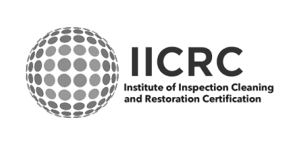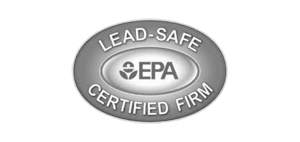Dealing with water damage in your house can be overwhelming, but with the right approach, you can effectively clean and restore your home. Whether it’s a leaky pipe, a flood, or any other water-related incident, taking immediate action is crucial to prevent further damage and potential health risks. By following these steps, you can minimize the impact of water damage and restore your house to its former condition.
Key Takeaways:
- Unplug everything and turn off appliances before starting the cleaning process.
- Use a wet/dry vacuum to soak up as much water as possible from floors and walls.
- Steam clean water damaged carpets to remove moisture and clean them.
- Disinfect walls, floors, and carpeting with a disinfectant cleaner to remove bacteria.
- Apply a product to prevent mold growth in areas that have been cleaned and disinfected.
Tips for Water Damage Cleanup and Restoration
If you’re looking to tackle water damage cleanup and restoration on your own, here are some tips to help you through the process:
- Unplug everything and turn off appliances before starting the cleaning process to ensure your safety.
- Use a wet/dry vacuum to soak up as much water as possible from floors and walls. This will help prevent further damage and mold growth.
- Steam clean water damaged carpets to remove excess moisture and clean them thoroughly. This will help eliminate odors and prevent mold.
- Disinfect walls, floors, and carpeting with a disinfectant cleaner to remove bacteria and sanitize the affected areas.
- Apply a product specifically designed to prevent mold growth in areas that have been cleaned and disinfected. This will help inhibit mold and mildew from returning.
- Use fans and a humidifier to speed up the drying process. Make sure to open windows and doors to improve air circulation.
- Remove soaked furniture and brush off any visible mold or mildew before cleaning. Use desiccants like clay or silica gel to soak up extra moisture from furniture.
- For appliances, hand clean them using appropriate cleaning agents, but leave electronics to be cleaned by professionals to avoid further damage.
- Dispose of mattresses that have been wet, as they can be difficult to dry completely and may harbor mold and bacteria.
- Take photographs of the damage and contact your insurance company to file a claim. Keep records of all the cleaning and restoration expenses.
Remember to prioritize safety and consider hiring professionals for extensive water damage and mold remediation. Water damage cleanup can be a daunting task, but by following these tips, you can effectively restore your home and prevent further damage. If you’re unsure or overwhelmed, don’t hesitate to seek professional help for a thorough and efficient cleanup process.
| Steps | Description |
|---|---|
| 1 | Unplug everything and turn off appliances. |
| 2 | Use a wet/dry vacuum to remove excess water. |
| 3 | Steam clean water damaged carpets to remove moisture. |
| 4 | Disinfect walls, floors, and carpeting with a disinfectant cleaner. |
| 5 | Apply a product to prevent mold growth in cleaned areas. |
| 6 | Use fans and a humidifier to speed up the drying process. |
| 7 | Remove soaked furniture and use desiccants to absorb moisture. |
| 8 | Hand clean appliances, leave electronics to professionals. |
| 9 | Dispose of wet mattresses. |
| 10 | Take photographs and contact insurance company. |
When to Seek Professional Help and Preventive Measures
While DIY cleanup can be effective in many cases, there are situations where it’s crucial to seek professional assistance for water damage restoration. Professional water damage restoration experts have the knowledge, experience, and specialized equipment to handle extensive damage and ensure thorough cleanup. Here are some scenarios where calling in the professionals is recommended:
- If the water damage is widespread or severe, it’s best to leave it to the professionals. They have the expertise to assess the extent of the damage, determine the appropriate restoration techniques, and mitigate any further issues.
- When dealing with contaminated water, such as sewage backups or flooding from natural disasters, professional help is essential. They have the necessary protective gear and disinfectants to safely handle and clean up hazardous materials.
- If you suspect mold growth, it’s crucial to involve professionals. They can conduct thorough inspections, identify hidden mold, and safely remove it to prevent health risks.
- When structural damage has occurred, professionals can assess the integrity of your home and recommend necessary repairs. They have the expertise to address structural issues and ensure the safety of your property.
Preventive measures are equally important to avoid future water damage. Here are some tips to protect your home:
- Regularly inspect and maintain your plumbing system, including pipes, faucets, and appliances.
- Ensure proper drainage around your home’s foundation by clearing gutters and downspouts.
- Install a sump pump to prevent water buildup in your basement.
- Seal any gaps or cracks in your home’s exterior to prevent water intrusion.
- Keep your home well-insulated to prevent condensation and moisture buildup.
- Consider installing a water leak detection system to alert you of any leaks or bursts.
Summing It Up
In summary, while DIY water damage cleanup can be effective in certain situations, it’s important to recognize when professional help is necessary. Extensive damage, contaminated water, mold growth, and structural issues are all indicators that you should seek professional water damage restoration services. Additionally, taking preventive measures can help protect your home from future water damage. By being proactive and addressing potential issues, you can minimize the risk of costly repairs and ensure the safety and well-being of your property.
| Section | Content |
|---|---|
| Section 1 | Step-by-step instructions on how to clean your house after water damage. |
| Section 2 | Tips and guidance for DIY water damage cleanup and restoration. |
| Section 3 | When to seek professional help and preventive measures. |
Conclusion
Cleaning your house from water damage requires prompt action, proper techniques, and sometimes professional help to ensure a safe and thorough restoration process. By following these steps, you can effectively clean and restore your home after water damage, minimizing the risk of further issues such as mold growth and structural damage.
Start by unplugging everything and turning off appliances before beginning the cleaning process. Use a wet/dry vacuum to remove as much water as possible from floors and walls, and consider steam cleaning water damaged carpets to remove moisture and clean them thoroughly. Disinfecting walls, floors, and carpeting with a disinfectant cleaner is crucial to eliminate bacteria.
Preventing mold growth is essential, so make sure to apply a product that inhibits mold growth in areas that have been cleaned and disinfected. Utilize fans and a humidifier to expedite the drying process and remove soaked furniture, brushing off any mold or mildew before cleaning them. Desiccants like clay or silica gel can be used to soak up extra moisture from furniture.
While hand cleaning appliances is feasible, it is recommended to leave electronic items to be cleaned by professionals. Dispose of mattresses that have been wet and document the damage by taking photographs to file an insurance claim. Consult professionals to clean valuable items and have upholstered furniture professionally cleaned.
Ensure that power is turned off if it has been affected by the water damage and contact a professional or the utility company to inspect and restore it. Be cautious of unseen hazards in your home, such as gas leaks and structural damage. Remember to air out the house by using fans, dehumidifiers, and opening windows and doors to prevent mold growth.
If the water damage is extensive, it is advisable to call a water restoration professional. Additionally, consider contacting a mold specialist to inspect the space for any potential mold growth. Once the area has been thoroughly dried, clean and sanitize it to ensure a safe and healthy living environment. If necessary, proceed with restoration and rebuilding, taking preventive measures to avoid future water damage.
Always prioritize safety and consider seeking professional help for extensive water damage and mold remediation. Taking the appropriate steps and utilizing the proper techniques will help you restore your home effectively and efficiently, ensuring a clean and healthy living space for you and your loved ones.
FAQ
How do I clean my house from water damage?
To clean your house from water damage, follow these steps:
What are some tips for water damage cleanup and restoration?
Here are some tips for DIY water damage cleanup and restoration:
What is the conclusion?
In conclusion, it’s important to prioritize safety and thorough cleanup when dealing with water damage in your home.









